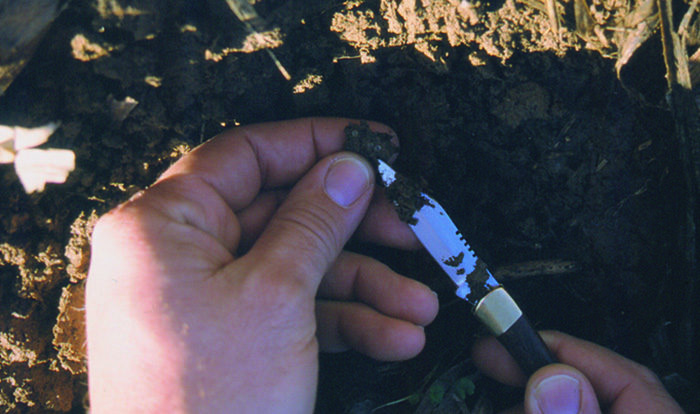No-Till Farmer
Get full access NOW to the most comprehensive, powerful and easy-to-use online resource for no-tillage practices. Just one good idea will pay for your subscription hundreds of times over.

David Graham steps out of his red pickup truck and into the barren field. He pulls out his pocketknife, digs into the corn stalks and within 2 minutes uncovers two slugs — one brown and another one black. The slimy creatures slither up the silver blade of his knife.
Finding slugs on his Wooster, Ohio, farm is a simple task — even in February. Graham counts on dealing with slugs every year. He and his father, Richard, have battled slugs since they started no tilling in 1982.
The yield loss can be as little as 30 percent and as high as 100 percent. “We’ve had whole areas of fields where the crop is completely gone,” Graham says looking over the fields surrounded by woods.
More slugs are sliding into no-till fields this year. At the nearby Ohio Agricultural Research and Development Center, (OARDC), entomologist Ron Hammond found higher slug counts than normal last fall.

“Anyone with slug problems in the past should be on the lookout,” Hammond says from his Wooster, Ohio, office. “This is not something that pops up once in awhile. If you’ve had problems in the past, there’s cause for concern.”
Winter weather actually has little to do with slug survival because the critters burrow into the ground. In fact, hot, dry summers do more to reduce slug populations than cold winters. Whether the slugs will chomp on your no-tilled crop in the spring depends on planting date, germination, emergence and when the eggs hatch…